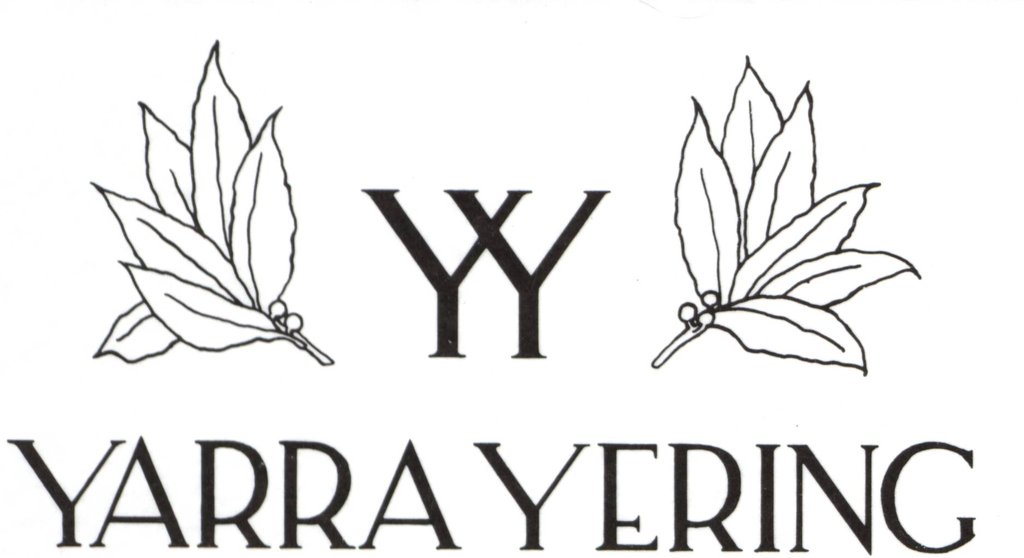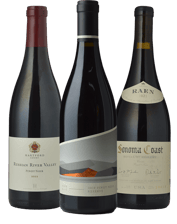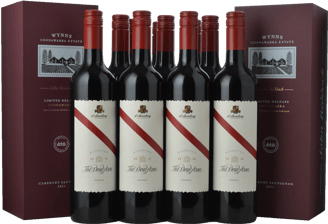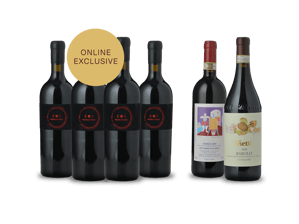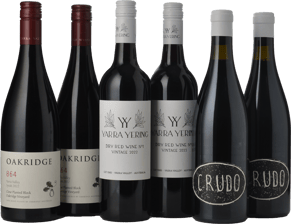Langton’s Selections
^3Yarra Yering Dry Red No.1 Cabernet, ^4Yarra Yering Dry Red No.2 Shiraz, Yarra Yering Pinot Noir
The late Dr. Bailey Carrodus was one of the great characters of the Yarra Valley, producing highly individual wines that owe as much to his high quality vineyards as to his winemaking theories. They are wines literally out of the box. Hundreds of enthusiasts throng to his cellar door to pick up a few precious bottles of No. 1 or No. 2 each year.
Carrodus established Yarra Yering in 1969, purchasing prime vineyard land at Gruyere near Coldstream in the Yarra Valley Victoria, once a thriving wine community during the late 1800s. His search for suitable vineyard land was based on a simple premise: that it should be where vines had thrived before and had avoided the threat of spring frost damage. Armed with a contour map he eventually chose what is now regarded as one of the choicest vineyard sites in the region. His vineyard, now about 70 acres, is planted on a north-facing midriff of hillside on deep, broken-up secondary gravelly soils with excellent drainage.
The cellar was originally set up so a single person could run it. The winery is making more wine than the early days, but the system is kept more or less intact. His objective is to make wines of complexity, palate evenness and after taste. He likes to ferment his wines at warm temperatures in small open fermenters. Indeed, he has 92 of them. Carrodus believes that he should keep in the background and allow the wines to speak for themselves, but admits that the wines do have some of the winemaker’s thumbprint.
All of Yarra Yering's wines attract a loyal following. Carrodus preferred a sprawling canopy for his Cabernet. In making No 1, a Cabernet dominant Bordeaux blend, Carrodus sought to make a wine of “complexity, palate evenness and after taste”. Vinification in small open fermenters, designed to fill a single hogshead of free run wine, is followed by maturation in 'closely textured' new Seguin Moreau French oak for around 22 months. Carrodus likens seasoning of wine in oak like salt in porridge, "If it is pronounced it makes it taste terrible."
Yarra Yering Dry Red No 1 has bright blackcurrant fruit characters, savoury complexity and fine grained tannins. The wines easily age for between 10 and 15 years developing extraordinary exotic gamey nuances over time. No 2 – which has a touch of Viognier – is vinified in open fermenters before extended skin maceration to increase complexity and tannin balance. At dryness the wine is drained and pressed and then transferred into 30% new and previously used 'closely textured' Seguin Moreau French oak for a maturation period of up to 22 months. It is hard to pin point this style as it is quite individual and subject to vintage variation. The best vintages show intense raspberry/choco-berry aromas, touches of white pepper, ripe tannin structures and plenty of flavour complexity.
Yarra Yering Merlot, produced in tiny quantities, was once one of the most expensive Australian wines, but now looks more reasonable value. Yarra Yering has also released a Dry Red No 3, a Sangiovese-based wine, although it has yet to have a presence on the secondary market. The Chardonnay is very individual, but is the weakest card in the pack. Certainly, the Yarra Yering reds have a house style showing an exotic complexity and perhaps revealing a combination of unique vineyard site and winemaker philosophy.
Yarra Yering has slowly slipped down Langton’s Classification but the quality of the vineyards are outstanding. It is something of a dark horse, but on reflection this has always been its charm.
Andrew Caillard MW, Langton's
